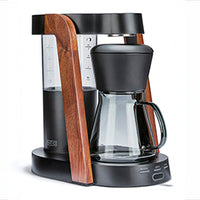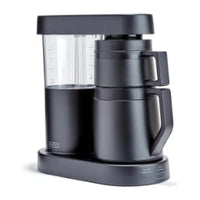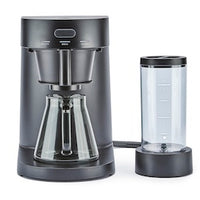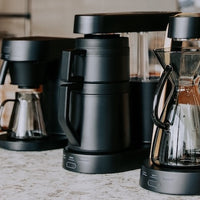What Happens When You Pour Too Fast (or Too Slow)
Key Takeaways
-
Pour speed directly affects extraction rate, balance, and clarity in your coffee
-
Pouring too fast can lead to under-extraction, resulting in sour, thin flavors
-
Pouring too slow risks over-extraction, producing bitterness and muddiness
-
Controlled pouring allows for even saturation and consistent flavor
-
Practice and a steady hand are as important as grind size and water temperature
Pouring isn’t just about getting water from kettle to grounds. It’s one of the most overlooked yet impactful steps in brewing coffee. Whether you’re making a pour-over, French press, or any brew method that involves manually adding water, the speed and control of your pour can make or break your cup.
Let’s explore how pour rate changes what ends up in your mug and how you can adjust your technique for a more consistent, balanced brew.
Why Pour Speed Matters
Pour speed determines how quickly water extracts soluble compounds from the coffee grounds. The right pace allows for even saturation, steady extraction, and balanced flavor.
-
Too Fast: Water rushes through the grounds, skipping over flavorful compounds and leaving you with a thin, sour cup.
-
Too Slow: Grounds sit in contact with water too long, pulling out bitter and woody compounds along with the pleasant flavors.
The key is finding that middle ground where flavors are fully developed without straying into harshness or flatness.
Pouring Too Fast: The Common Pitfalls
When water is added too quickly, it can create channels in the coffee bed, allowing water to bypass certain grounds entirely. This leads to:
-
Uneven extraction
-
Sour, sharp flavors
-
Weak aroma
-
Lack of sweetness or body
Fast pouring is often caused by an overly aggressive tilt of the kettle, poor control, or impatience. Even if your grind size and coffee-to-water ratio are perfect, a rushed pour can still ruin the final cup.
Pouring Too Slow: Over-Extraction Risks
At the opposite extreme, a painfully slow pour can over-extract. This means you’re pulling more than just the pleasant soluble compounds from the coffee — you’re also extracting tannins and bitter compounds.
Symptoms include:
-
Harsh bitterness
-
Dry, astringent mouthfeel
-
Muted aromatics
-
Heavy, muddy aftertaste
Slow pouring also extends total brew time, which may push your coffee outside the optimal extraction window.
The Goldilocks Zone of Pouring
Finding the right pour speed involves:
-
Even Saturation: Every ground particle should get wet evenly during the first pour.
-
Steady Flow: Avoid sudden changes in pour rate.
-
Consistent Height: Keep your kettle spout at a similar distance from the coffee bed.
A good benchmark is aiming for a total pour-over brew time of 2.5–4 minutes (depending on method and grind size), adjusting pour rate accordingly.
Tools for Better Pour Control
-
Gooseneck Kettles: Designed for precision pouring, letting you adjust flow speed easily.
-
Digital Scales with Timers: Help track pour intervals and keep brew time consistent.
-
Practice Sessions: Brew smaller test batches focusing solely on flow rate control.
Practice Makes Perfect
Like latte art or consistent grinding, mastering pour speed takes repetition. Practice with different beans and roast levels to see how subtle changes affect the cup.
Some home brewers find it useful to break pouring into stages — a bloom phase, a mid-pour for extraction, and a finishing pour for clarity and volume.
Balancing Pour Speed With Other Variables
Pour speed doesn’t work in isolation. It interacts with:
-
Grind Size: Finer grinds extract faster, requiring slightly quicker pours to avoid over-extraction.
-
Water Temperature: Hotter water speeds extraction; you may need to pour a bit faster.
-
Brew Method: Different methods (Chemex vs. V60) demand different speeds and patterns.
Mastering how these variables interplay ensures you’re in control of flavor outcomes.
Bringing It All Together
Perfect coffee isn’t just about beans and grind — it’s also about how you deliver the water. A steady, controlled pour helps highlight the full spectrum of your coffee’s flavors while avoiding the extremes of sourness or bitterness.
Pairing thoughtful pouring technique with a precision coffee machine from Ratio Coffee means your cup starts with consistent quality. From there, it’s up to your hands to bring out the best possible flavor.
Frequently Asked Questions
How do I know if I’m pouring too fast?
If your brew finishes significantly earlier than the expected time and tastes sour or weak, you’re likely pouring too quickly.
Can pour speed fix bad grind size?
Not entirely. While you can adjust pour speed to compensate slightly, an incorrect grind will still limit flavor quality.
Should I pour in circles or straight down?
Circular pouring helps distribute water evenly, but consistency matters more than the exact pattern.
Does pour speed matter for immersion methods like French press?
Less so, but an extremely fast pour can still cause uneven saturation and extraction.
How can I practice without wasting beans?
Try pouring plain water through a filter with rice or dried beans to work on flow control without using coffee.
 Ratio Eight S2
Ratio Eight S2
 Ratio Eight Original
Ratio Eight Original
 Ratio Six
Ratio Six
 Ratio Four
Ratio Four
 Compare Machines
Compare Machines






